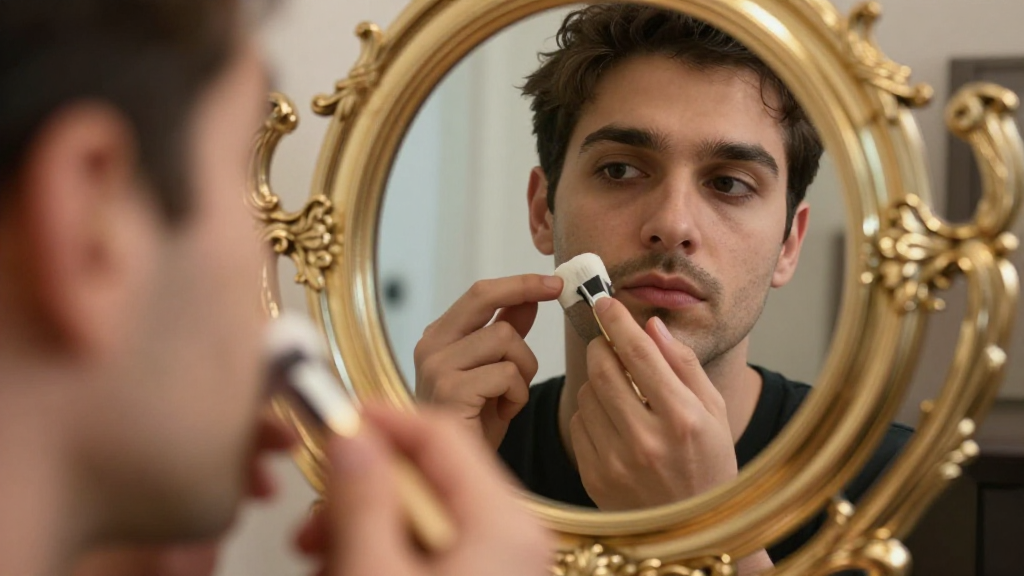Free PDF Guide:
GRAB ITFREE PTSD QUIZ
Mindful self-compassion for Daily Living (Meditation script)

Mindful self-compassion: Script 1
When people think of self-compassion, they often think of being kind to themselves in times of distress. And it’s true that the practice of compassion can include self-kindness.
But the practice of self-compassion is bigger than that. The benefits are deeper when you extend this practice to the entire spectrum of your life. In our world, we often feel overwhelmed by the stresses of daily living.
We worry about money, health, relationships, and more. The practice of self-compassion means accepting yourself as you are right now and not getting caught up in the drama of daily life.
It means allowing yourself to face the reality of where you are in your life. In this exercise, you will explore the qualities of self-compassion. You will practice mindful self-compassion in a variety of situations.
Start with some self-compassion phrases, and then move through a number of scenarios to practice mindful self-compassion.
Close the eyes and find a comfortable sitting position. When you feel ready, begin with a few words to guide you.
Think of phrases of self-compassion, or simply say “thank you.” You can say them out loud or silently.
Repeat as many times as you feel is appropriate. When you feel finished, turn your attention inward. Be with yourself and notice what emotions arise. Allow yourself to experience any feelings of stress and distress, even when you don’t want to.
Just notice it and return your attention to your breathing as many times as necessary.
If you notice that your mind wanders, simply notice it and return to the breath. When your mind settles, continue to focus on your body. Bring awareness to your breathing. Notice your thoughts and emotions and gently return to the breath.
Let your awareness be as large as possible. For the next minute, focus on what you are thinking. Are you experiencing thoughts about your past? About the present? About your future?
Are you thinking about your family, your friends, or your dreams? Just notice all that arises in your mind. When thoughts come, acknowledge them. Allow a few moments to pass, and then bring awareness to your body.
Notice what you are feeling. Are you feeling calm or agitated? Happy or sad? What about your surroundings? Are you alone or with others? Are you in a public space or in a private space? Be with your emotions.
Notice your thoughts and your body. Do you have any particular emotion that stands out? For example, are you experiencing feelings of sadness, anger, anxiety, fear, or joy? What about your environment? Are you in a busy place or a quiet one?
Do you feel safe? Can you notice the sound of your breath? You may find that your mind wanders and you lose awareness of your body. Simply notice this and bring awareness back to your breath. Bring your attention to a situation you are facing.
It could be something that is happening in your personal life, like worrying about a job interview, or it could be a more abstract experience, like worrying about an upcoming exam. In either case, notice the way your thoughts are changing as you think about this situation.
It may seem like you’re lost in thought, but that’s okay. Just notice what’s happening. When you feel ready, turn your attention inward. Be with yourself and notice the sensations in your body. If you are aware of thoughts, acknowledge those thoughts. Then, be with your thoughts and emotions.
Just notice what’s happening. You may feel the pull between noticing your thoughts and emotions and just letting them be. You may want to try to be with the emotions. But that’s okay, too. You can be with what you are experiencing. When you feel ready, open your eyes and begin to move. Notice where you are in your body. Is your body comfortable or uncomfortable?
Are you holding tension or letting go? Move through a series of postures to allow yourself to experience your body in various ways. Sit up and move your hands, arms, or legs. Try to experience how this body feels in each posture. Be with your body in each moment. When you feel ready, invite gentleness into your body.
Close the eyes and invite softness to your body from the beginning. When you feel ready, begin to speak to yourself, noticing your body and how it feels. For example, you could say: “My body is heavy,” “I feel peaceful,” “I feel calm,” “My body is strong,” or “My heart is open.” You could also say something more general, like “My heart is open.”
Practice these phrases for a few minutes, saying the words and feeling the meaning in your body. Then, invite gentleness to the body and close the eyes. Bring your awareness to your breathing for a few minutes.
Feel the rhythm of the breath. As you do so, you will be practicing mindfulness. After a few minutes, let go of these phrases and bring your awareness back to your body.
Take a few minutes to just be with yourself. How does your body feel? What emotions are you feeling?
Mindful self-compassion: Script 2
Mindful self-compassion is a simple practice that offers you the possibility to recognize your imperfections and be kind to yourself.
Mindful self-compassion helps you to see yourself as valuable, no matter what you do. It allows you to move out of self-hatred and embrace who you are. In this exercise, you will bring mindfulness and kindness to your daily activities.
Close the eyes, and place your hands in your lap. Begin by bringing awareness to the sensation of the body breathing.
As you inhale, draw in breath deeply and hold it for a count of four. On the fourth exhalation, release the breath and expand your awareness. Bring awareness to the area of the body in which you are sitting, noticing its shape and size. Bring your awareness to your hands, noticing the length, width, and texture of each finger.
Notice how they move in response to your movements. Bring your awareness to your arms and shoulders, noticing if you are hunched or relaxed. Bring awareness to the muscles in your face and the skin on your face.
Notice if your face is tense, relaxed, or somewhere in between. Continue with the rest of the body. Bring awareness to your neck, upper back, mid-back, lower back, buttocks, legs, and feet.
Where is your attention going? What are you noticing? Are you focused on some areas and not others? What does it feel like to be present?
How does your body feel in this moment? Bring your attention to the part of you that is most aware in this moment. What does it feel like? Where is it? How does it feel to be here?
As you begin to engage in mindful self-compassion, you may feel that your mind has wandered away from the task at hand. When this happens, gently bring your attention back to your task.
There are no right or wrong answers here; there is only the exploration of your own experience.
For the next few minutes, continue to breathe deeply. After a while, slowly begin to shift your awareness to the outside world. Bring your attention to sounds in the environment and the sensations of objects around you. Bring your awareness to your immediate surroundings and notice what you can see.
When you have enough time, move to the next step. Open your eyes, and bring awareness to the feeling of being alive.
Feel the energy moving in the body and notice the thoughts in your mind. Be with these feelings and thoughts without judgment. What can you notice?
Can you find the words to describe these feelings and thoughts? Do you notice any patterns in your thinking? You may notice that some of your thoughts are critical. You may notice a tendency to think negatively about yourself.
Can you notice any tendencies in your behavior or emotional experience?
Do you tend to judge yourself harshly? Can you be more accepting of yourself? Notice your feelings, thoughts, and behaviors.
What is this like? What do you notice? Does the body have a feeling of heaviness? Is there a desire to sleep? Notice if the mind is still. When you have completed the exercise, bring your awareness to the sensation of the body breathing.
Thank yourself for practicing this exercise. You have completed the practice of mindfulness and self-compassion.
Mindful self-compassion: Script 3
In today’s world, many people struggle with isolation and loneliness. And while most of us know the power of mindfulness to enhance our daily lives, many of us feel overwhelmed by how to apply mindfulness in our relationships.
In this exercise, you will discover ways to bring kindness and compassion to your daily life. Begin by bringing your attention to the present moment. Bring your awareness to the sensations of the body.
When it’s difficult to pay attention in a situation, it can feel like the body is tensing up, but when you bring awareness to the sensations in the body, you can notice how the mind can be quiet.
For example, if you notice your heart beating fast, it’s a signal that you are getting anxious. Notice how you might react to stress in a similar way. Next, notice the thoughts and feelings that arise in your mind.
The mind is full of thoughts, and we usually experience them as though they are true.
They seem to be us, so we identify with them and believe they are us. But when you bring awareness to thoughts, you can notice that thoughts are only fleeting mental events.
When you notice your mind thinking, pause, and observe what is happening. You can also recognize that emotions come from the body and follow a particular sequence. For example, a feeling of fear can lead to a desire to run away, which then triggers a fight response.
You can use this knowledge to understand yourself more clearly and see the thoughts and emotions that arise in response to the events in your life. Next, notice your inner experience as it relates to the environment.
You can notice what your body feels like as you face a friend, your children, or a stranger. As you move through the day, notice what you experience in your body.
This exercise allows you to notice how you are experiencing yourself in the world, and you can learn to connect this experience of yourself to your relationships.
Click here to get back to the list of self-compassion meditation scripts
DFMMasterclass
How to deal with a difficult family member
References
- Neff, K. D. (2011). Self-Compassion: The Proven Power of Being Kind to Yourself. William Morrow.
- Neff, K. D., & Germer, C. K. (2013). A pilot study and randomized controlled trial of the mindful self-compassion program. Journal of Clinical Psychology, 69(1), 28-44. https://doi.org/10.1002/jclp.21923
- Germer, C. K. (2009). The Mindful Path to Self-Compassion: Freeing Yourself from Destructive Thoughts and Emotions. Guilford Press.
- Kabat-Zinn, J. (2013). Full Catastrophe Living: Using the Wisdom of Your Body and Mind to Face Stress, Pain, and Illness. Bantam Books.
- Gilbert, P. (2010). The Compassionate Mind: A New Approach to Life's Challenges. New Harbinger Publications.





